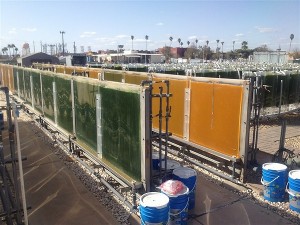February 5, 2013
 The Advanced Research Projects Agency – Energy (ARPA-E) is hosting its fourth annual Energy Innovation Summit in Washington D.C. on February 25-27, 2013. The event is designed to collect esteemed individuals involved in the energy community- researchers, entrepreneurs, investors, corporate executives, and government officials- to engage in sharing ideas to develop and deploy next generation energy technologies. The summit is a unique opportunity to discuss innovative energy solutions that will fit the world’s future needs.
The Advanced Research Projects Agency – Energy (ARPA-E) is hosting its fourth annual Energy Innovation Summit in Washington D.C. on February 25-27, 2013. The event is designed to collect esteemed individuals involved in the energy community- researchers, entrepreneurs, investors, corporate executives, and government officials- to engage in sharing ideas to develop and deploy next generation energy technologies. The summit is a unique opportunity to discuss innovative energy solutions that will fit the world’s future needs.
“This unique forum will help facilitate the partnerships necessary to bring game-changing technologies to market quickly, which is critical to securing America’s global technology leadership and creating new jobs.” – Steven Chu, Secretary of Energy.
The summit is separated into three days which will consist of technology discussions with ARPA-E program directors, multiple panel sessions, and networking programs. Each year, the summit also hosts the Technology Showcase which features cutting-edge technology developments. The showcase enables participants to converge with research organizations and companies that are positioned to transform our energy future.
Arizona State University is one of the proud research organizations participating in the Technology Showcase at the 2013 ARPA-E Innovation summit. This year ASU will be showcasing LightWorks, which will be representing all supported initiatives, as well as projects specifically focusing on cyanobacteria, carbon capture, and Fluidic Energy, an ASU spin-out company working in battery storage. Preparation for this event was supported by ASU's Office of Knowledge Enterprise Development.
Booths in the Technology Showcase:
Carbon Capture:
Carbon capture is an energy efficient and cost effective process that captures carbon dioxide from prominent emission sources, such as a coal-burning power plant. ASU is advancing the method of carbon dioxide capture by using electrochemical reactions used to capture and release carbon dioxide. This process has the possibility of reducing energy and cost requirements significantly as well as enabling a solution to reduce carbon dioxide emissions. This research was recently awarded a grant from the U.S. Department of Energy.
Cyanobacteria:
Through revolutionary technology, cyanobacteria are used as photosynthetic biocatalysts to convert solar energy and carbon dioxide into feedstock for biofuels. This process enables cyanobacteria to secrete fatty acids which produce a larger biomass. The biofuel produced then can be used as jet fuel, gasoline, green diesel fuel, and even bioplastics. Four years ago, ASU was awarded a $5.2 million dollar grant from the DOE to develop this research for two years
Battery Storage:
Fluidic Energy, an Arizona State University spin-out company, will be showcasing their innovative technology focusing on battery storage. The company aims to develop high energy density batteries with ultra-long run times at a lower energy cost. Fluidic Energy targets on advancing the most effective, safe, and sustainable battery technology.
High-energy batteries address the issue of battery energy and energy storage needed for low-cost and long-range power for hybrid and electric vehicles. This research aims to develop an electric vehicle battery which would allow a distance range better or comparable to a gas-powered vehicle. Through the development of energy storage technologies, the hope is to reduce the need for imported oil to power our vehicles. Battery storage technology won a $5.1 million grant from the DOE to continue development of this research over a two year period in 2009.
LightWorks:
The LightWorks initiative of Arizona State University will be showcasing a variety of energy-related technologies focusing in the area of renewable energy and liquid transportation fuels. LightWorks’ multidisciplinary effort aims to leverage ASU’s unique strengths, particularly in development of artificial photosynthesis, biofuels, and next generation photovoltaic. Recently, ASU won a $15 million grant from the DOE to lead the first-ever national algae testbed. The testbed, Algae Testbed Public-Private Partnership (ATP3), is led by LightWorks’ director Gary Dirks.
Through our leading-edge research, Arizona State University has many things to discuss at the Technology Showcase at the ARPA-E Innovation summit this year. The summit is a great opportunity for ASU to connect and engage in developing next generation energy technologies with researchers from all around the United States. If you would like to learn more about the summit visit http://www.arpae-summit.com/ for more details.
Written by Gabrielle Olson, ASU LightWorks

